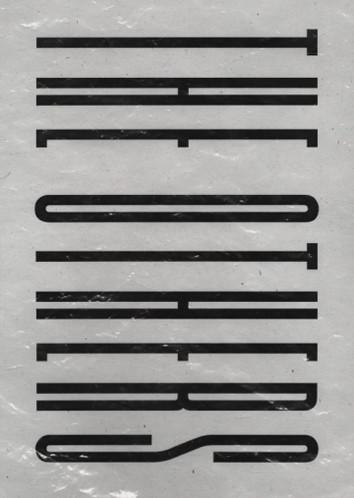The Others
If you happened to glance at the number of pages in this manuscript (listed above) you’ll have noticed that it is much longer than your typical book of poems. In fact, The Others is not really a book of poems; it is a thick 4 x 7 paperback that looks very much like a typical novel. Amazon calls it a “gripping, eerie, and hilarious novel-in-verse,” and that description seems about right.
If you happened to glance at the number of pages in this manuscript (listed above) you’ll have noticed that it is much longer than your typical book of poems. In fact, The Others is not really a book of poems; it is a thick 4 x 7 paperback that looks very much like a typical novel. Amazon calls it a “gripping, eerie, and hilarious novel-in-verse,” and that description seems about right.
The book reads as one long free-verse poem in a single column that predominantly captures the left side of each page, though sometimes moving to the center or right with occasional leaps and breaks in the text. Via this 229-page poem, readers follow a day in the life of a publishing assistant as he muddles through various story ideas from Paris to science fiction jungles, stumbling through the adventures of hashish eating, bigfoot robots, encounters with ghosts in a Michigan lighthouse, and cult executions.
But believe me, this is not merely “a day in the life.” Rohrer delightfully introduces his readers to the world of story and how it feels to be both inside and outside of the stories that pass over a publishing assistant’s desk. He is constantly pitched to and pitching in, entering the stories as an actual character and coming out of them to reconnect to his physical reality like someone still caught in fantasy and feeling his way through these blurred lines.
On page 74, the narrator begins reading from the actual (fictional) manuscript titled The Others for which this novel is named as he sits in a pew in St. Thomas, an Episcopalian church with:
beautiful stained glass,
mostly blue, high ceilings,
and that smell of stone and wood
pews and dusty red hymnals
that, though I don’t believe, feels
restful.
He shares the sanctuary with only a homeless man as he enters into the story of a few American men in a small village in Ireland, which quickly turns into a story set in Paris as one of the men recounts his experience as an instructor teaching on the Romantic poets in the city in which “the life of books is lived so deeply.” The story becomes ghostly as the man leads his listeners below Paris and into the catacombs, back above ground again to an Algerian restaurant. He is then in his home where he sleeps and dreams a dream of his real life but littered with ghosts, the dead, or as he calls them “Others,” one of whom approaches him and begins to shout “Hey! Hey!” while shoving the narrator. “You’ve seen enough!” the Other insists to the narrator as he shoves the narrator, “out / of the dream, into bed, / the echo of his shout / still in [the narrator’s] waking ears.”
And that’s when the publishing assistant closes the book and turns around to hear the “homeless guy . . . rattling his pew.” Rohrer, or the publishing agent, or the narrator. . . or whoever the hell is telling this story now. . . leaves the church, the sun setting on top of Hoboken as he looks:
downtown,
Sixth Avenue, the lights
stretching out and rising
upwards on the buildings
emitting a real, a tangible
power, and you can feel it
standing there in New York.
Yes, you can feel it: the life of the assistant who is the narrator who is also not the narrator sometimes, as well as the life of the stories within stories and how it’s all one “real [ . . . ] tangible power” and all very part of what it means to live and breathe literary New York.
Rohrer’s work is fascinating because it succeeds in uncovering the cliché plotlines and poor character developments that must cross a publisher’s desk day in and out by creating an original narrative in a hybrid genre that is neither cliché or poor—yet Rohrer makes this look and feel easy.
I bet it wasn’t. I bet it was hard work to create a unique and engaging narrative out of a handful of terrible stories. It’s got me thinking that this might be an especially necessary read for anyone who intends to query HarperCollins if they want the “what not to write” inside track!





